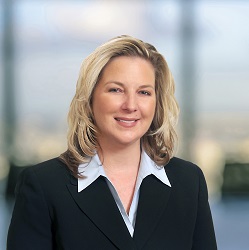Top-Level Takeaways
-
New accounting standards take effect in 2023, but preparations should already be underway.
-
Opinions vary about the impact, but loan reserves are expected to go up, and net worth could drop.
-
The upside includes better understanding of portfolio management and analytics, especially after years of growth.

Chad Flaherty, Senior Manager, Moss Adams
Effective Jan. 1, 2023, the nation’s credit unions will face what consensus holds is the biggest accounting change for financial institutions in decades.
That’s when member-owned cooperatives will be required to adhere to the current expected credit loss (CECL) methodology introduced by the Financial Accounting Standards Board in 2016.
In a nutshell, CECL will require credit unions, and other lenders, to predict and account for expected losses over the life of a loan, instead of the current generally accepted accounting principles (GAAP) that require losses to occur before they’re recognized on the books.
The forward-looking approach was created to help shock-proof portfolios against the kind of credit losses that shook the economy after the financial crisis that began in 2007. But it also will have effects seen and unforeseen on how credit unions go about their business, stakeholders say.
While the new CECL guidance affects impairment models for multiple kinds of financial assets ? trade receivables and debt securities to name two ? the sea change for credit unions could be in reserving for loan losses. The impact? Opinions vary.
Although there are concerns that higher loan reserves could lead to widespread tightened lending, Moss Adams senior manager Chad Flaherty says, I don’t believe it will. He says it’s hypothetically possible that a credit union with strong loan growth could have an allowance large enough to hit its capital hard, but I don’t know that many people are truly concerned about that.

Chad Garber, Partner, BKD
Julie Renderos, executive vice president and chief financial officer at Suncoast Credit Union ($9.9B, Tampa, FL), views it differently. The CECL model requires holding substantially more in reserves than necessary, and the cost of the required resources to analyze data on a granular level will burden not-for-profit credit unions of all sizes, she says.
This will result in a decline of credit availability and less return to consumers. These unintended consequences as a result of CECL will negatively impact our economy, which ultimately adversely impacts all consumers, Renderos says.
Then there’s Chad Garber, a partner with the BKD accounting firm in Indianapolis, and chair of its credit union committee since 2013. It’s hard to tell how CECL will affect reserves in the long run, he says.
Five Things To Do Now
Here are five CECL action items from Chad Garber, an Indianapolis-based CPA who heads up BKD’s credit union committee:
- Educate your board of directors and relevant committees.
- Establish a CECL committee.
- Create a list of preliminary models to consider.
- Set a timetable for implementation.
- Monitor as SEC-overseen financial institutions implement CECL in the next six to nine months.
Garber adds, The hope is that credit unions will be free to build reserves before the problems start showing up in the form of charge-offs, which will be the same under CECL as they are now. In the short term, we expect to see some strains on resources ? people and money ? to implement this standard.
That leads to another possible major effect at some credit unions: a reduction in net worth. The NCUA says its examiners will be aware of that when evaluating capital adequacy, and that a new ratio that shows the difference in net worth pre- and post-CECL implementation will be added to each credit union’s Financial Performance Report.
The board of directors and senior management of your credit union should become familiar with the new accounting standard to assess how the new standard differs from the existing incurred loss model, former NCUA chair Mark McWatters says in his 2017 letter to credit unions on CECL. Once familiar with the standard, different allowance estimation methods should be evaluated for appropriateness within your credit union.
After evaluation comes implementation.
Implementation Challenges
A recent survey of 45 clients by Moss Adams, an accounting and advisory firm that serves a nationwide clientele of financial institutions that includes more than 165 credit unions, identified a list of challenges for implementing CECL standards. They include:
- Accumulation of historical loan-level data and analysis.
- Applying the concept of reasonable and supportable forecasts.
- Developing and implementing the actual credit loss models.
About half of those respondents in the Moss Adams survey said they felt very prepared for implementing CECL, and the same proportion said they felt somewhat prepared. Only a couple said they hadn’t read the standard yet.

Julie Renderos, Chief Financial Officer and Executive Vice President, Suncoast Credit Union
Renderos has. The biggest change for us and for our entire industry will be a shift in focus from short-term earnings impact to total return over the life of the loan, the Suncoast executive says.
As the veteran CFO points out, with CECL the full amount of the potential loan loss must be booked the day the loan is made, which Renderos says creates a mismatch of income and expenses in the origination year.
For example, she says, when adding a loan on Jan. 1, you’ll have a full 12 months of income to offset the full life of loan loss booked then. But that same loan made on Dec. 1 will have only one month of income to offset the life-of-loan loss, likely creating a net loss in the short term.
That effect could be exacerbated at credit unions with lower-grade paper. As the CFO of the nation’s largest holder of the NCUA’s Low-Income Credit Union designation, Renderos is well aware of that and points out: A lower credit-quality loan will create an even greater disparity between income and expense due to requiring a much higher life-of-loan loss.
Lots To Do, But Do Something

Jennifer Zocchi, Vice President and Controller, Patelco Credit Union
The Suncoast executive team is actively educating itself on the coming changes, Renderos says. The same goes for Patelco Credit Union ($6.9B, Pleasanton, CA), where vice president and controller Jennifer Zocchi says the management team plans to begin working with its current asset and liability software provider’s CECL consulting group later this year.
We don’t want to shortchange ourselves. We want to begin to implement CECL and do all the documentation and legwork, including figuring out the data we have, along with the calculations required, with plenty of time to execute, Zocchi says. In the end, we hope to come to a solid conclusion about which methodologies work best for each respective portfolio.
That’s a key point. One challenge that is maybe unique to credit unions is the mixture of their portfolios, says Flaherty, the senior manager with Moss Adams in Portland, OR. From consumer loans to mortgages to credit cards to member business loans and lines of credit, each have their own characteristics that can make it difficult to model for expected losses.
The regulators agree. The NCUA reiterates that steps need to be taken by your credit union in advance to ensure effective implementation of the standard, the McWatters letter says.
There are a number of potential challenges, and we see many institutions struggle to make meaningful progress, says Garber at BKD. Start today and don’t be afraid to make a decision!
Modeling The Changes: A WARM Approach
CECL, CECL On The Web
Want to study CECL online? Here are three good places to start:
- American Institute of CPAs Credit Union Implementation Plan
- Financial Accounting Standards Board Credit Losses Website
- NCUA, Fed, OCC, FDIC Interagency FAQs on CECL (April 2019)
Plus:
- BKD also has an online resources center dedicated to CECL.
- Moss Adams offers its own CECL Accounting Guide.
There are multiple models for credit unions to use to anticipate loan losses and determine how they want to build reserves. Garber says regulators have consistently held that CECL is scalable, and he says credit unions using loss rate models today should expect to find them acceptable under the new standards.
For small credit unions, he says, the WARM (weighted average remaining maturity) model released by regulators might be a better fit as it seems to be the best at leveraging what is already being done today. You don’t have to move to more complex methods unless you want to.
At a big credit union, we face the challenge of identifying the appropriate methodologies and making sure they fit with each respective portfolio, says Zocchi, the Patelco controller. Typically, there’s no one-size-fits-all approach.
She heard estimates from conference speakers that allowances may have to double or triple, and that while it remains to be seen, CECL could affect what loan products her big California credit union will offer and to whom.
Lemonade Out Of Lemons
But on the bright side, there are some opportunities for operational advancements in the CECL implementation exercise.
Flaherty at Moss Adams thinks that understanding potential losses across the life of a portfolio can help credit unions make more informed pricing and risk decisions, for instance. And Garber at BKD calls CECL a great opportunity to reassess your loan allocation.
He notes that many credit union portfolios have changed significantly due to both growth and the kinds of loans offered, and their original calculations are being stressed.
One of the overlooked benefits of CECL ? it more directly allows the ability to build reserves in good times, Flaherty says. If taken seriously, I think it can be leveraged into larger operational decisions such as loan performance and pricing, stress testing, and credit analytics.